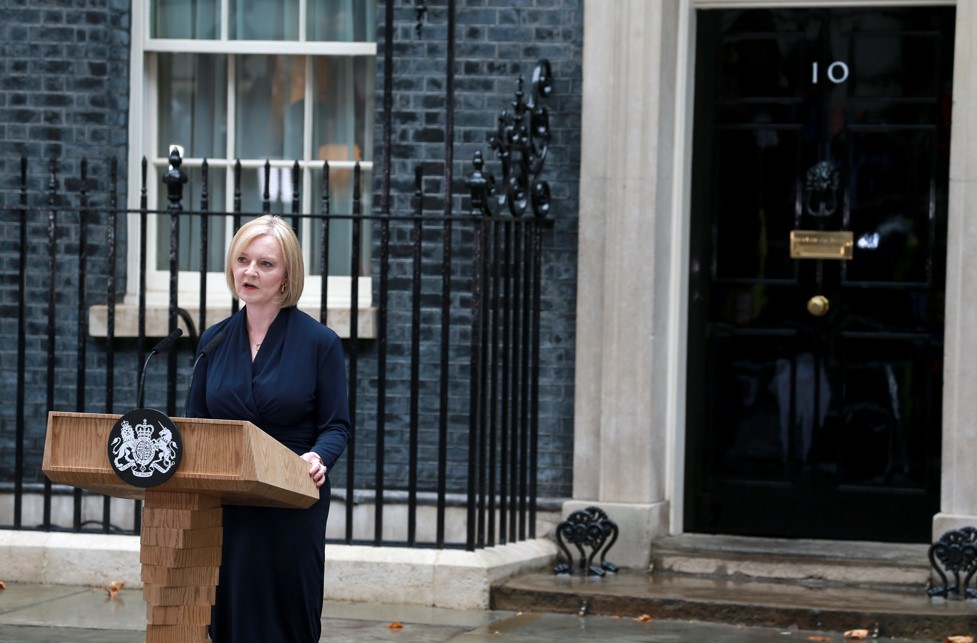Kwasi Kwarteng, in his first major address as Chancellor of the Exchequer, has laid out a host of hard-hitting changes to the UK’s tax regime. This was quite the whopper given it’s an unofficial budget, but following the pantomime-esque race to the top of the ministerial pile, it may come as no surprise.
From an economic perspective, the success of the measures will be judged by the passage of time, but following its announcement on Friday the markets have taken a bleak view of it’s prospects, with Sterling sliding to record lows against the dollar. The Chancellor’s “new era” for Britain centres around economic growth, with this unprecedented host of tax cuts designed to jump-start the economy in the context of soaring energy costs and inflation. Ironically, we may well see the opposite happen, with talk of the Bank of England having to step in with emergency measures – increasing the base rate to sure up the Sterling from falling further. This hike in interest rates will have multiple consequences for both businesses and individuals, most notably slamming the brakes on that hyped-up growth plan.
Looking at the taxes and rates tinkered with, criticism also appears to be piling on Kwarteng and Truss, as the apparent benefit to high earners dwarfs that of the lower and middle earners, despite Kwarteng’s assurances that it’s a budget for everyone.
But enough of the economics and politics, let’s delve into the headline announcements…
Corporation Tax – 19% and no more
The rate of corporation tax was due to jump up come April 2023 for companies with profits exceeding £50k, climbing to 25% for those with profits in excess of £250k.
In a move to encourage investment, this change has now been abandoned, meaning there will continue to be a single corporation tax rate of 19%.
National Insurance – reversal of 1.25% increase
Another U-turn in policy has been announced in the reversal of the additional 1.25% increase National Insurance, applied to the self-employed, employees and employers. This reversal is scheduled to take effect from 6th November 2022 – helpfully, 7 months though the tax year.
The equivalent 1.25% hike in tax on dividends will also be reversed, but this will wait until 6th April 2023.
Income Tax – Basic rate reduced by 1% (to 19%)
In a move touted as assisting the lower earners, Kwarteng has cut the basic rate of income tax from 20% to 19%, effective from 5th April 2023. As an example, this will put an extra £174 in the pocket of an employee earning £30k.
Ironically, higher earners will benefit more from this change (or at least equally). Take our word on that one.
Income Tax – Additional rate of tax (of 45%) has been abolished
It’s difficult to see how this one benefits those most in need at the moment (despite references to trickle-down economics), but the chancellor has removed the 45% rate of income tax for earnings over £150k, meaning those same earnings will now be taxed at just 40%.
Putting this in context, an employee earning £500k will receive an extra £17.5k in their pocket each year as a result of this change. Not small change.
Annual Investment Allowance – Staying at £1m
The AIA has seesawed since it was introduced in 2008, and it was scheduled to drop from £1m to £200k, from April 2023. Kwarteng has now announced that the £1m currently enjoyed by businesses will be permanent, giving assurances to companies looking to invest large amounts that they’ll receive more tax relief up-front.
Super Deductions – Some adjustments ahead?
When the government originally announced the increase in corporation tax rate to 25%, they supplemented it with the (then) new super-deduction, which provided 130% tax relief on eligible plant and machinery investment. This was designed to ensure companies didn’t delay investing in assets in order to obtain a greater rate of relief once the 25% tax rate kicked in in April 2023.
Reversion to the current 19% rate means that this super-deduction stands to be a permanent benefit, with winners from this being those who invest prior to the end of the super-deduction on 1st April 2023. The government has however stated that ‘technical adjustments’ will be required regarding the super deduction – however they have been very light on detail at this point. It’s possible that this will be a form of partial clawback, but only if or when these assets are sold. So some advantage still to be gained by investing prior to that point.
IR35 – Contractors responsible for assessments
In the budget, the government committed to repealing the off-payroll (IR35) legislation. The IR35 reforms, which rolled into the public and private sectors in 2017 and 2021 respectively, will no longer apply from April 2023. Instead, the original rules will remain, and contractors will be responsible for assessing their own tax.
Stamp Duty Land Tax (SDLT)
Previously, there was no Stamp Duty Land Tax (SDLT) payable on the first £125k of a property’s value in England and Northern Ireland. This has now been doubled to £250k with effect from 23rd September.
First time buyers, who previously paid no SDLT on the first £300k, will now enjoy a similar hike, with this threshold jumping to £425k from 23rd September.
Details on whether similar changes will be applied in Scotland and Wales are yet to be confirmed.
Energy – Relief from soaring inflation
As previously announced, the Government is to cap household energy bills at £2,500 for two years from 1st October 2022, saving the average household an estimated £1,000.
The government, through business secretary Jacob Rees-Mog announced the Energy Bill Relief Scheme, a scheme designed to provide businesses with relief for a period of 6 months, until 31 March 2023. As for households, the discount will be provided automatically and is in the form of a discount on energy bills.
Investment Zones
The government has announced that there could be around 40 local Investment Zones in England, which will benefit from various tax concessions. These include 100% relief on qualifying investment (over and above the AIA), removal of business rates and NIC relief on new employees.
The details are vague at this point. The exact locations of these Investment Zones are currently in discussion, but far from confirmed.




